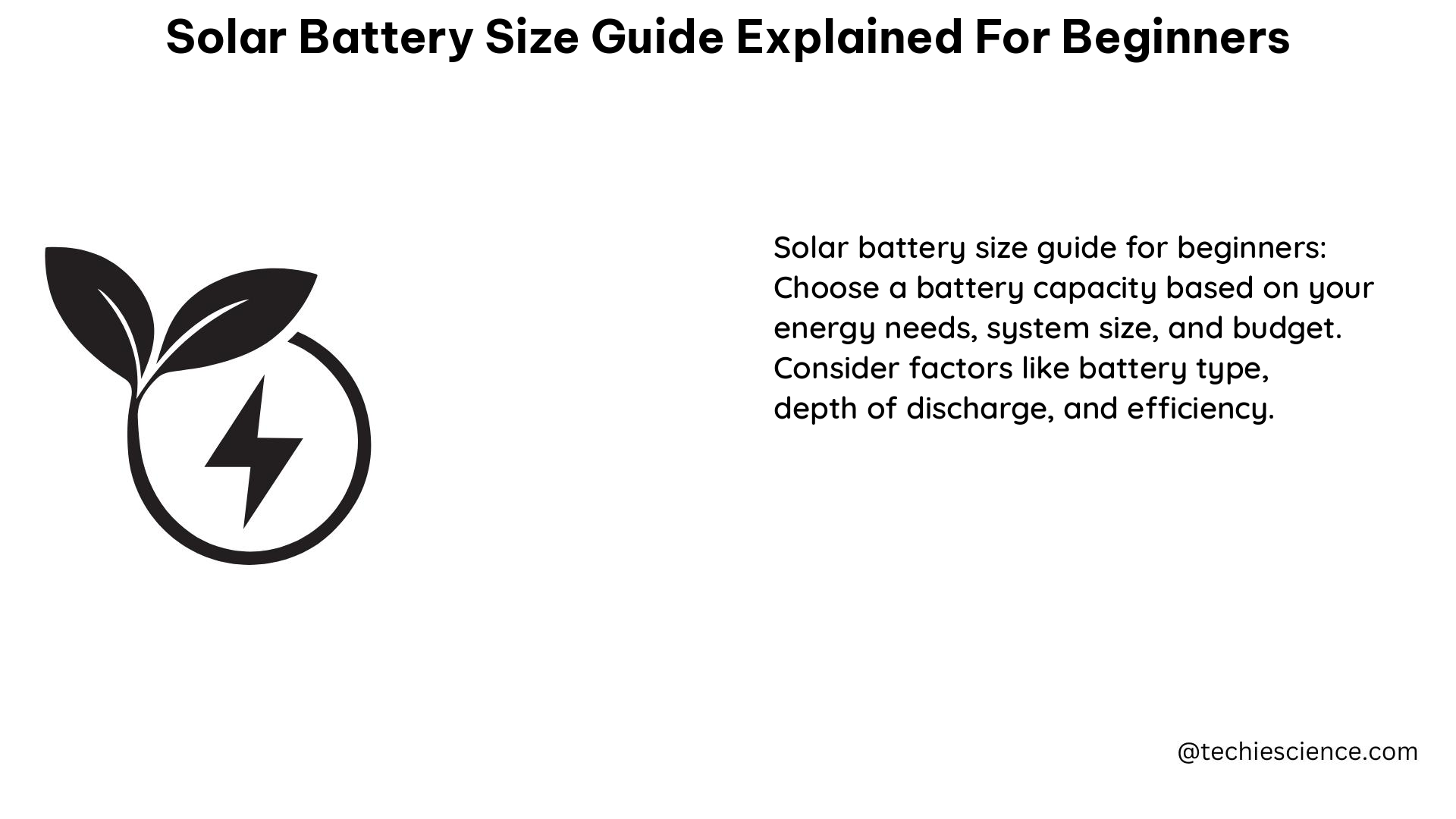Determining the appropriate size of a solar battery is a crucial step in designing an efficient and reliable solar power system. This comprehensive guide will walk you through the key factors to consider, providing you with the necessary knowledge to make an informed decision on the right solar battery size for your needs.
Calculating Daily Energy Consumption
The first step in sizing your solar battery is to determine your daily energy consumption. This can be done by adding up the energy usage of all your appliances and devices. To get an accurate figure, you can use your smart meter or check your electricity bill for a monthly consumption figure, then divide it by the number of days in the billing period to get an average daily consumption.
For example, if your daily energy consumption is 10 kWh, you will need a battery with a minimum capacity of 10 kWh to sustain your energy needs for one day.
Understanding Autonomy Days

Autonomy days refer to the number of days your solar power system can operate without any input from the sun or other external energy sources. This is the number of days the system can continue to provide power using the energy stored in its batteries, even if there is no sunlight to recharge them.
The autonomy days of a solar power system depend on several factors, such as the capacity of the batteries and the amount of energy consumed daily. In off-grid solar systems, where there is no connection to the grid, the batteries serve as the primary source of energy, and a longer autonomy period ensures that the system can continue to operate during extended periods of low sunlight or adverse weather conditions.
When considering what size battery to opt for, it’s important to factor in how many days of autonomy you want. For example, if you want your system to have 3 days of autonomy, you’ll need to size your battery accordingly.
Depth of Discharge (DoD)
Depth of Discharge (DoD) is the term used to describe the percentage of a battery’s capacity that can be used before recharging is required. It is calculated by dividing the amount of energy taken out of the battery by its total capacity.
For instance, if a battery has a total capacity of 100 kWh and 40 kWh of energy has been used, the DoD would be 40%. Lithium-ion batteries have a higher DoD than lead-acid batteries, meaning they can discharge more before needing to be recharged. However, a deeper DoD can also reduce the battery’s overall lifespan, so it’s important to strike a balance between maximizing energy use and preserving battery life.
The recommended DoD for most solar battery systems is around 80-90%, as this helps to extend the battery’s lifespan while still allowing for efficient energy usage.
Calculating the Required Battery Size
To calculate the required battery size for your personal use, you can use the following formula:
Battery Size (kWh) = (Daily Energy Consumption x Autonomy Days) / DoD
For example, if your daily energy consumption is 10 kWh, you want 3 days of autonomy, and your battery has a DoD of 0.9 (90%), the required battery size would be:
Battery Size = (10 kWh x 3) / 0.9 = 33.33 kWh
It’s important to note that this is the minimum battery size required to meet your energy needs. In practice, it’s often recommended to size the battery slightly larger to account for factors such as system inefficiencies, future energy needs, and battery degradation over time.
Consulting with Solar Professionals
While the formulas and calculations provided in this guide can help you determine the appropriate solar battery size, it’s always a good idea to consult with a solar professional. They can provide valuable insights, take into account your specific energy requirements, and help you choose the right solar battery for your needs.
Solar professionals can also assist with other aspects of your solar power system, such as panel selection, inverter sizing, and system design, to ensure that your entire setup is optimized for maximum efficiency and reliability.
Conclusion
Determining the right solar battery size is a crucial step in building a reliable and efficient solar power system. By understanding the key factors of daily energy consumption, autonomy days, and depth of discharge, you can calculate the minimum battery size required to meet your energy needs.
Remember to consult with solar professionals to ensure that your solar battery selection is tailored to your specific requirements and that your entire system is designed for optimal performance.
References
- Solar Battery Sizing Explained
- How to Size a Solar Battery Bank
- Solar and Batteries Made Simple: A Quick Guide to Sizing Your Solar and Battery System
- Choosing the Right Size and Capacity for a Solar Battery System
- Finding Your Perfect Solar Battery Size: A Step-by-Step Guide

The lambdageeks.com Core SME Team is a group of experienced subject matter experts from diverse scientific and technical fields including Physics, Chemistry, Technology,Electronics & Electrical Engineering, Automotive, Mechanical Engineering. Our team collaborates to create high-quality, well-researched articles on a wide range of science and technology topics for the lambdageeks.com website.
All Our Senior SME are having more than 7 Years of experience in the respective fields . They are either Working Industry Professionals or assocaited With different Universities. Refer Our Authors Page to get to know About our Core SMEs.